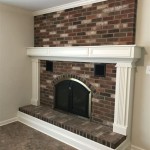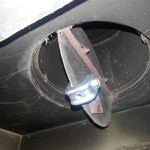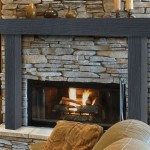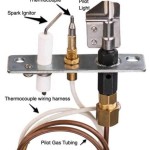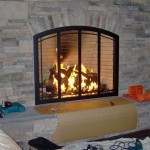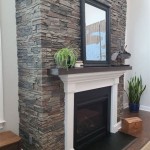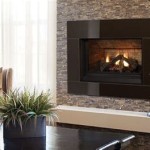Fireplace Brick Cover: Protecting Infants from Potential Hazards
Fireplaces, while adding warmth and aesthetic appeal to homes, can pose safety risks, particularly for infants and toddlers. Fireplace brick, often retaining heat for extended periods after a fire, can be a significant burn hazard. Furthermore, the rough texture of brick can cause abrasions or other injuries if a child falls against it. Therefore, implementing safety measures, such as a fireplace brick cover, becomes a crucial aspect of childproofing a home.
A fireplace brick cover serves as a protective barrier, mitigating the risks associated with direct contact with the brick surface. These covers come in various forms, ranging from padded cushions to rigid panels. The selection of the most appropriate cover depends on several factors, including the fireplace design, the level of protection desired, and aesthetic preferences. Understanding the potential hazards and available solutions is essential for creating a safe environment for young children.
Understanding the Hazards of Fireplace Brick for Infants
The primary hazard associated with fireplace brick is its ability to retain heat. Even after a fire has been extinguished for several hours, the bricks can remain hot enough to cause burns. Infants, with their delicate skin, are particularly susceptible to burns, even from brief contact with a heated surface. The severity of the burn depends on the temperature of the brick and the duration of contact. A seemingly minor touch can result in a significant injury, requiring medical attention. Parents and caregivers should recognize that the visual absence of flames does not guarantee that the fireplace area is safe for children.
Beyond the risk of burns, the physical characteristics of fireplace brick also present potential dangers. The uneven, abrasive surface of the brick can cause scrapes and cuts if a child falls or bumps into it. Infants learning to crawl or walk are especially prone to falls, making the fireplace area a high-risk zone. The edges of the brick, often sharp or jagged, can exacerbate the risk of injury. Even if the impact is minimal, the rough texture of the brick can irritate a child’s sensitive skin.
Furthermore, the mortar joints between the bricks can be crumbly and potentially contain loose pieces. A child might pick at these pieces and ingest them, posing a choking hazard or potentially exposing them to harmful substances. While mortar is not typically toxic, ingestion of any non-food item presents a risk, particularly for infants who explore their environment by putting things in their mouths. Therefore, preventing access to these mortar joints is an important consideration in fireplace safety.
Types of Fireplace Brick Covers and Their Features
Numerous types of fireplace brick covers are available, each offering varying levels of protection and aesthetic integration. Padded covers, often made of foam or similar materials, provide a soft barrier that reduces the risk of burns and abrasions. These covers can be attached to the brick surface using adhesives or straps, ensuring a secure fit. The thickness of the padding determines the degree of protection offered. Thicker padding is more effective at preventing burns but may also be more visually obtrusive.
Rigid panels, typically constructed from wood, plastic, or metal, offer a more durable and aesthetically versatile solution. These panels can be custom-made to fit the exact dimensions of the fireplace, providing a seamless and integrated look. They can be attached to the fireplace using screws or brackets, ensuring a secure and stable barrier. Rigid panels are particularly effective at preventing access to the brick surface and protecting against falls. The material used for the panels should be heat-resistant and non-toxic, ensuring that it does not pose additional hazards.
Fireplace screens, while primarily intended to contain sparks and embers, can also offer a degree of protection against contact with the brick. However, traditional screens may not be sufficient to prevent a determined child from reaching the brick surface. Therefore, a screen should be combined with other safety measures, such as a padded cover or a play yard, to create a comprehensive safety barrier. It is important to select a screen that is sturdy and well-anchored, preventing it from being easily knocked over by a child.
In addition to these standard options, some homeowners opt for custom-built solutions, such as enclosing the fireplace with a gate or building a decorative barrier. These solutions offer the most comprehensive protection but also require the most significant investment and planning. The design of a custom barrier should consider both safety and aesthetics, ensuring that it effectively protects children while complementing the home's overall décor.
Installation and Maintenance of Fireplace Brick Covers
The installation process for a fireplace brick cover depends on the type of cover and the specific fireplace design. Padded covers typically require minimal installation, involving the application of adhesive strips or the tightening of straps. It is crucial to ensure that the adhesive is strong enough to hold the cover securely in place, preventing it from being easily removed by a child. Regular inspection of the adhesive is necessary to ensure that it remains effective over time.
Rigid panels often require more involved installation, potentially involving the use of screws or brackets. It is essential to follow the manufacturer's instructions carefully to ensure proper installation and stability. If the homeowner is not comfortable with this type of installation, a professional installer should be consulted. Proper installation is critical to ensure that the panels are securely attached and cannot be dislodged by a child. Regular inspection of the panels and their attachment points is necessary to identify and address any potential issues.
Maintenance of fireplace brick covers typically involves regular cleaning and inspection. Padded covers can be cleaned with a damp cloth and mild detergent. Rigid panels can be wiped down with a dry or slightly damp cloth. It is important to avoid using harsh chemicals or abrasive cleaners, as these can damage the cover's surface. Regular inspection of the cover is necessary to identify any signs of wear and tear, such as cracks, tears, or loose attachments. Any damaged covers should be repaired or replaced promptly to maintain their effectiveness.
Regardless of the type of fireplace brick cover selected, it is essential to maintain vigilance and supervise children closely around the fireplace area. A cover provides a protective barrier, but it is not a substitute for responsible supervision. Educating older children about the dangers of the fireplace and establishing clear boundaries can also contribute to a safer environment for all members of the family. By implementing a combination of physical barriers and responsible supervision, parents and caregivers can effectively minimize the risks associated with fireplaces and ensure the safety of infants and toddlers.

Diy Baby Proofing Your Brick Fireplace Thisaveragemom

Baby Proofing Fireplace More Easy Hearth Padding Oh Love Proof House

21 Paing S That Will Save Your Sanity And Bank Account Baby Proof Fireplace Diy Stuff

Babysafetyfoam Com Baby Proofing Fireplace Hearth Guard Bumper Pad Safety Cushion Cover Protection

Diy Custom Fireplace Hearth Cover The Yellow Rosebud

How To Baby Proof A Fireplace Diy Hearth Cushion Simply September

3 Ways To Baby Proof A Fireplace Wikihow

How To Baby Proof A Fireplace Hearth Easy Step By Diy Childproof Remodel

How To Baby Proof A Fireplace Diy Hearth Cushion Simply September

Baby Proofing 101 How To Proof Your Fireplace
Related Posts

